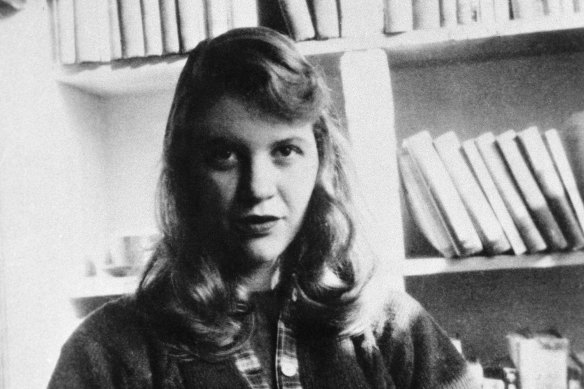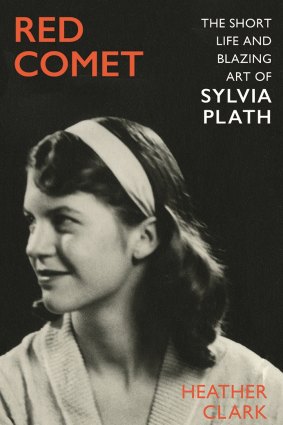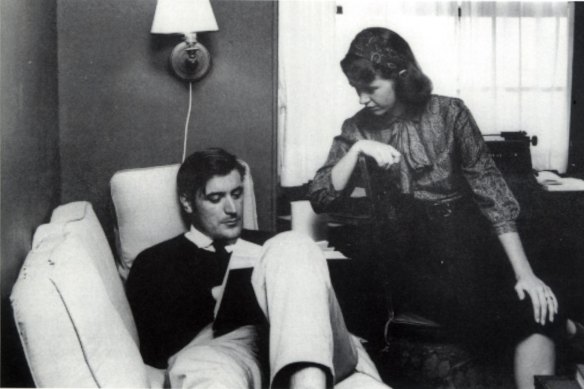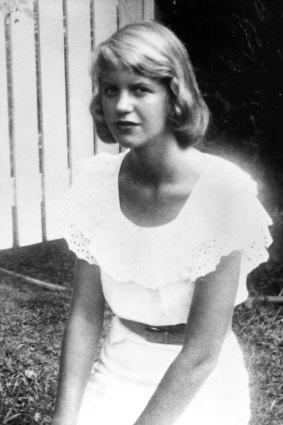- REVIEW
- Culture
- Books
- Literature
This was published 3 years ago
The enduring legacy of Sylvia Plath: her writing
BIOGRAPHY
Red Comet: The Short Life and Blazing Art of Sylvia Plath
Heather Clark
Jonathan Cape, $65
As Heather Clark explains in her prologue, she wanted more and she wanted less. For her biography Red Comet: The Short Life and Blazing Art of Sylvia Plath, she was adamant that her subject, “one of the most important American writers of the 20th century”, deserved a lengthier study than was currently available. She also set out to produce “a less pathological portrait of Sylvia Plath’s life than what now exists”, a book that focused above all on her development as a writer.

When Sylvia Plath died in 1963 she left on her desk the manuscript for her second volume of poetry. Credit: Bettman Archive
In a long, detailed work of 900-plus pages of text, with more than 100 additional pages of end-notes, Clark seeks to avoid not only the highly charged, adversarial discourse of much Plath biography, but also the overwrought popular image of the writer and the individual as fragile, tormented and self-destructive before all else. As Maggie Nelson notes in her book The Art of Cruelty: “Lest we forget, to be called the Sylvia Plath of anything is a bad thing.”
Life and art are not always easily separated, particularly when it comes to a writer such as Plath. There is extraordinary, transformative power in the best of her writing, a disciplined, ferocious exploration of possibilities and extremes that begins close to home.
Plath found many ways to be a writer. She put so much of her life on paper, employing different registers, personally and professionally: from determinedly sunny letters to her mother to self-lacerating journal entries, from stories written to a perceived formula for popular magazines to her most formally inventive poetry.

Credit:
She was 30 when she died, by suicide, on February 11, 1963. A single volume of poetry, The Colossus, had already appeared under her name, and her novel, The Bell Jar, had just been published under a pseudonym. She was not the household name she has become, but she had been published for years in journals and magazines. Her quest for a literary career took place, Clark shows, when the priorities for a woman were still considered to be husband and family. Plath wanted that too, but she wanted more.
She thought all this would be possible in her marriage to the poet Ted Hughes, whom she met when she was studying at Cambridge University. She was ambitious for them both, determined to help promote him and to be a literary high-achiever in her own right herself. Clark has already written about this dynamic in a different context, in a scholarly study, The Grief of Influence, an intertextual examination of the poetry of Plath and Hughes and the complex, competitive to-and-fro of their influences on each other.
Clark has challenging material, but she has produced a judicious and measured book. Red Comet has a strong, engaging narrative that interweaves archival elements, quotations from the work and carefully qualified judgements, There is a rich texture of the everyday alongside wide-ranging investigations of influences and references with which Plath was in dialogue.
The generous end-notes make Clark’s sources clear, and she occasionally alerts the reader to differences in her approach from that of previous biographers, or to new areas of emphasis. She argues for The Bell Jar as a novel of social protest, and draws attention to Plath’s tender, ambiguous poems about motherhood. She discusses Plath’s engagement with political issues, but also registers some of her ugly outbursts and obsessions.
In working on Red Comet, Clark has not been encumbered by battles with the estate that were frequent stumbling blocks for biographers in earlier years. The estate was first managed by Hughes’ sister, Olwyn. Negotiations were often fraught and there was always the threat of withdrawing permission to quote from the work. Controversy also accompanied the posthumous publication of Plath’s writing. And in the 1980s and 1990s, books about her seemed to be received and reviewed as if they were testimonies for the prosecution or the defence. Red Comet is published at a less divided time.

Heather Clark’s biography of Sylvia Plath, seen here with her husband, Ted Hughes, in Boston in 1958, is judicious and measured.
There is also more material for Clark to draw on, including letters, interviews and archival content that had not been available to earlier researchers. She often presents multiple perspectives on an incident or an event, alternate versions of a familiar story from the Plath mythology.
She goes into more detail about Plath’s antecedents and spends more time covering her juvenilia, aiming to identify long-standing thematic concerns. She presents a more nuanced portrait of Plath’s mother, Aurelia, and she has new things to say about other significant figures, including Dr Ruth Beuscher, the psychiatrist who first treated Plath in college, and Al Alvarez, the English literary critic and editor, a champion of her work who also had a complicated impact on her life.
Red Comet is divided into three sections: the final one covers the last two years and two months of Plath’s life and takes up a third of the book. It was a devastating, chaotic time for Plath and it was also her most creatively potent period, when she wrote the poems that she knew, with absolute confidence, would make her name.

Sylvia Plath put much of her life down on paper.Credit:
Psychiatry and medicine failed Plath in various ways at different moments in her life, Clark suggests, but her book never underplays the significance of Plath’s depression and the grim combination of circumstances, in the London winter of 1962-63, that made her particularly vulnerable.
Referring to that time, Clark says, “I prefer to think of Sylvia Plath as I have come to know her during the eight years I have spent writing this book”. She invokes the figure of Plath “three years to the day before she died”, heading off to a London publisher to sign the contract for her first volume of poetry, seven months pregnant, smartly dressed, ready to celebrate with her husband what was “the high-water mark of her professional life”.
Three years later, Clark reminds us, Plath left behind on her desk “her new book of poems, the manuscript neatly bound, awaiting its revelation”. Red Comet explores in comprehensive, measured detail the circumstances of Plath’s life, but it also encourages us to return to her “blazing art”, to the work itself.
The Booklist newsletter
A weekly read for book lovers from Jason Steger. Sign up now.